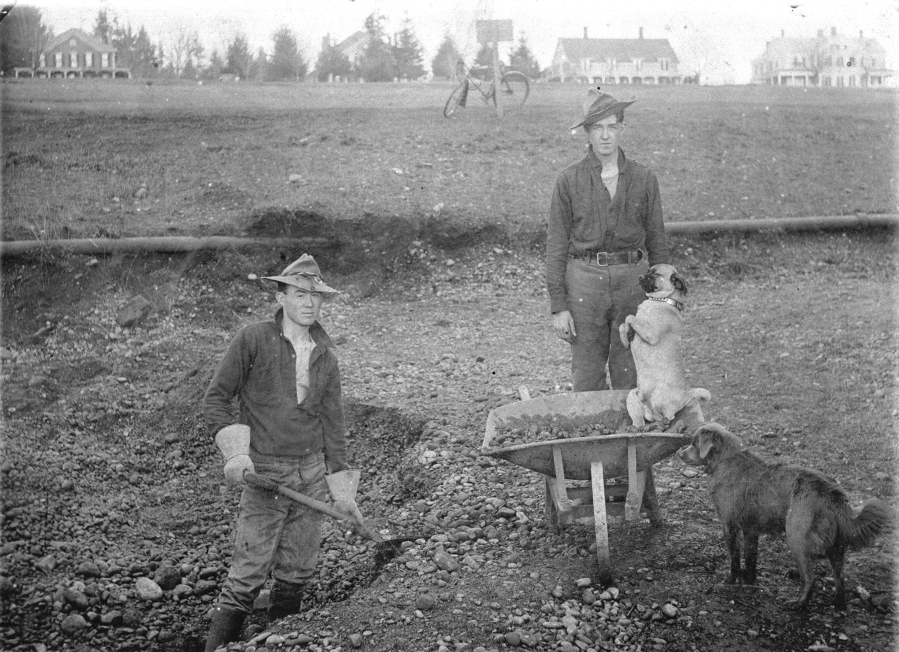The past will be in fuzzy focus Saturday when Fort Vancouver approaches history in terms of what might be called dog years.
That includes a couple of decades when Fort Vancouver was a thriving part of the Hudson’s Bay Company’s fur-trading empire.
Then the U.S. Army came along and made Fort Vancouver and Vancouver Barracks a regional military hub for more than a century.
Then — as now — there were dogs. But dogs of the 19th and early 20th centuries weren’t there to fetch Frisbees; they lived there.
Those eras will be part of the program at 10 a.m. Saturday when Fort Vancouver National Historic Site hosts its first “Bark Ranger” walking tour.
Designed for visitors and their dogs, the tour will include the history of dogs at Fort Vancouver and Vancouver Barracks.
“Fort Vancouver National Historic Site is a great place to walk your dog,” said Ranger Meagan Huff, who will lead the tour. “And there’s also a fascinating history of dogs here — from pet dogs in the Hudson’s Bay Company village to mascot dogs of Army regiments at Vancouver Barracks.”
Several Army photographs from the early 1900s feature dogs. Huff learned that one mascot was named Spud, according to information on the back of a photograph.
Those pets and mascots have been dog-gone for decades, yet some have turned up as part of the archaeological record.
A Portland State University student came across a curious collection of bones a few years ago during a summer excavation at the workers’ village, where Hudson’s Bay Company employees and their families lived through the 1830s and 1840s.
After a skull was recovered, Flynn Renard and a faculty member looked through reference books to figure out what it was, she said.
It was a dog skull. As students carefully brushed away the soil, they uncovered a fragile layer of fabric.
Pet was laid to rest
“We put together the pieces of the puzzle. It was an animal buried in a blanket. They buried their pets with care” — at this home, anyway, Renard said in a 2011 Columbian story.
It is one of seven dog burials that have been documented at the historic site, according to a report written by Beth Horton.
The U.S. Army era was represented when archaeologists uncovered a bulldog skeleton in the 1980s. Army personnel had buried the dog in the 1880s while repairing the foundation of a stable, wrote Horton, a National Park Service archaeological technician.
Some of the dogs could have been on the job. Records from Vancouver Barracks indicate that soldiers in the 21st Infantry converted a room in an enlisted men’s barracks into a kennel in the 1870s. The animals may have been used as guards or scout dogs when the 21st Infantry took part in regional Indian campaigns, including the 1877 Nez Perce War, Horton wrote.
Saturday’s tour will begin at Pearson Air Museum, 1115 E. Fifth St. The first leg, focusing on dogs of the Hudson’s Bay era, will cover a half-mile on a paved trail with little incline. An optional leg will cover an additional three-quarters of a mile with a moderate incline; the history focus will be dogs during the U.S. Army period.
Participants are not required to bring a dog, but dogs are welcome. They should be friendly with other dogs and people, and up to date on vaccines. Those with dogs must bring waste bags, food and water as necessary, and a leash no longer than 6 feet.
In case of inclement weather, the tour may be rescheduled. Check www.nps.gov/fova, or the park’s Facebook or Twitter pages (@FtVancouverNPS).




